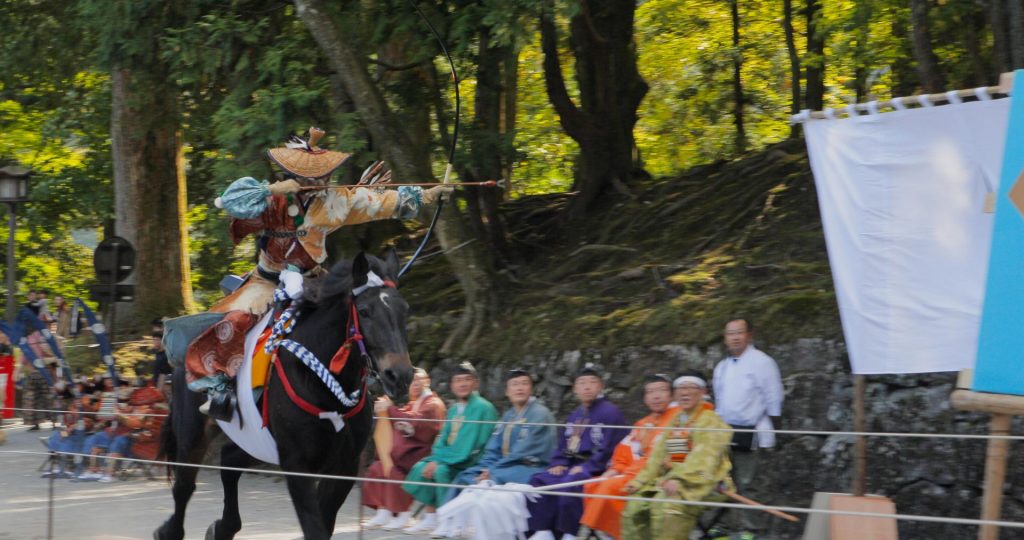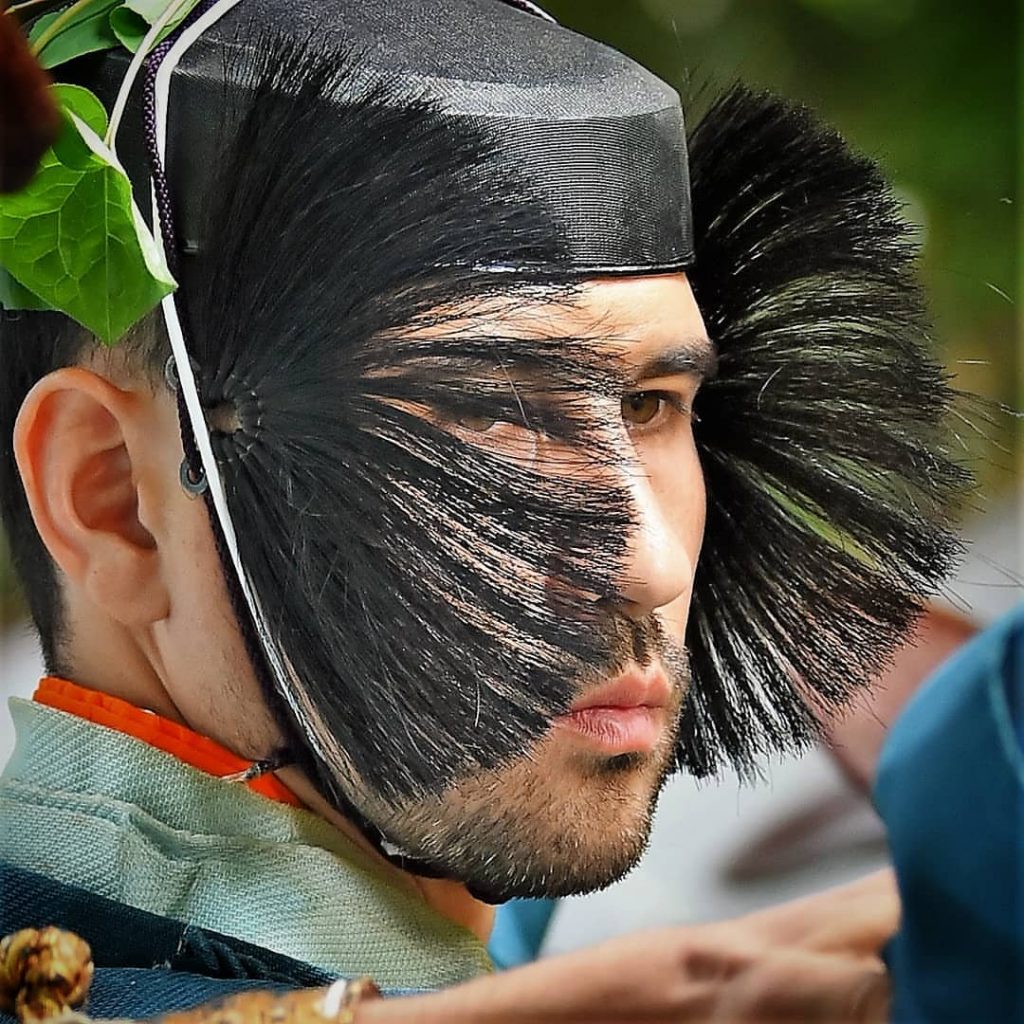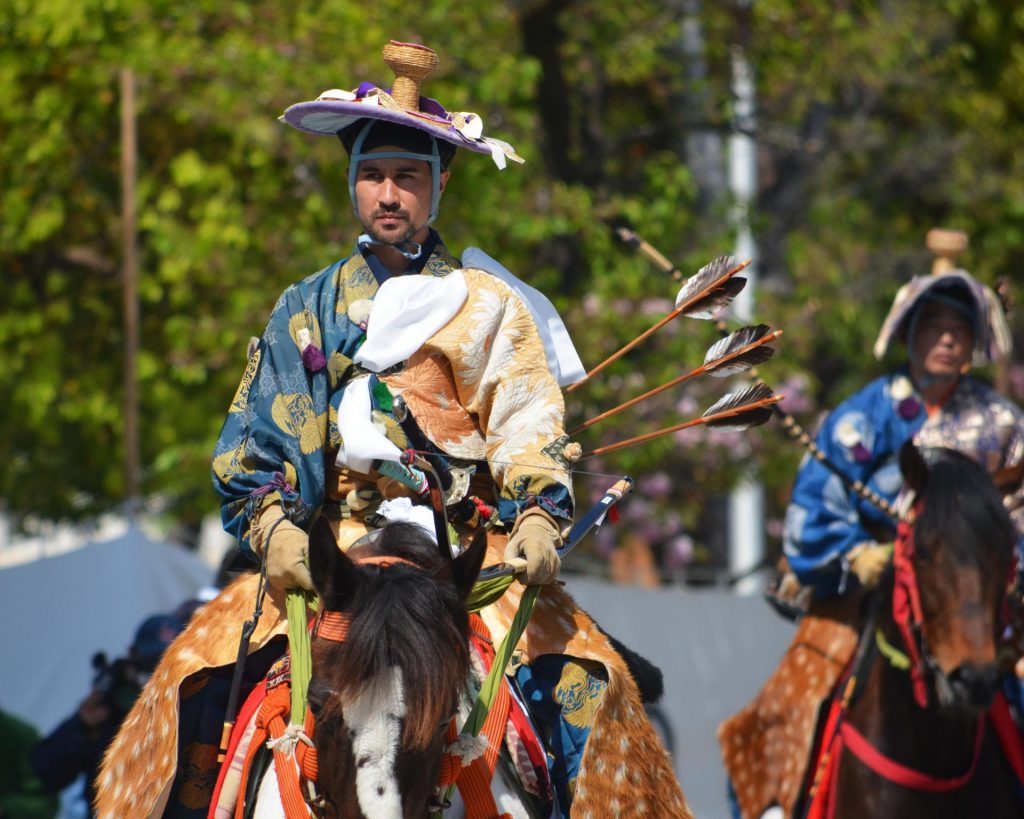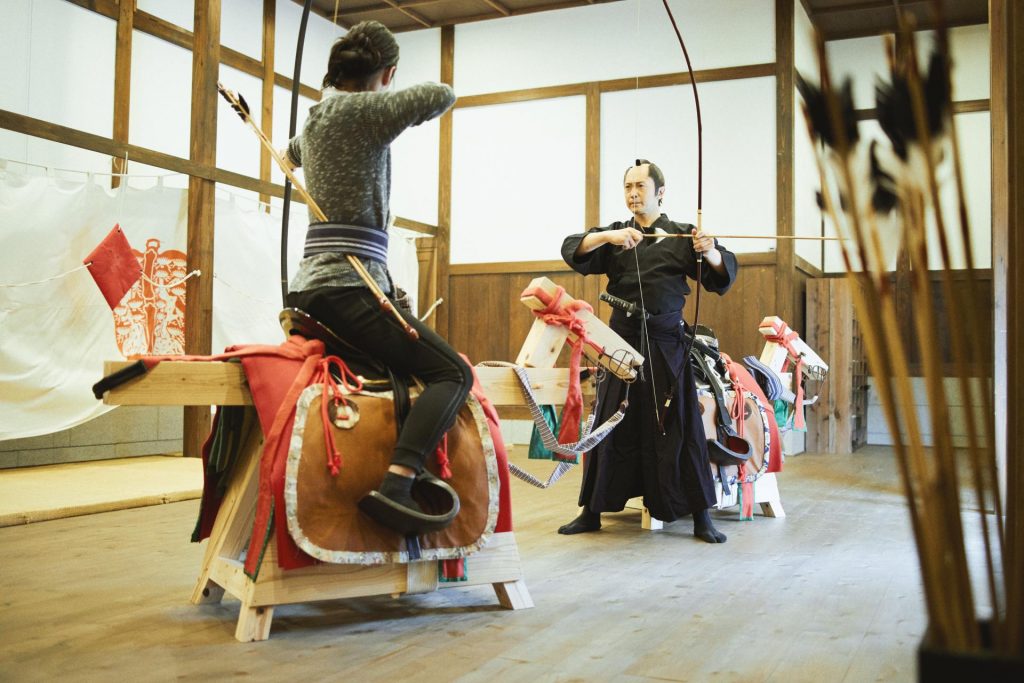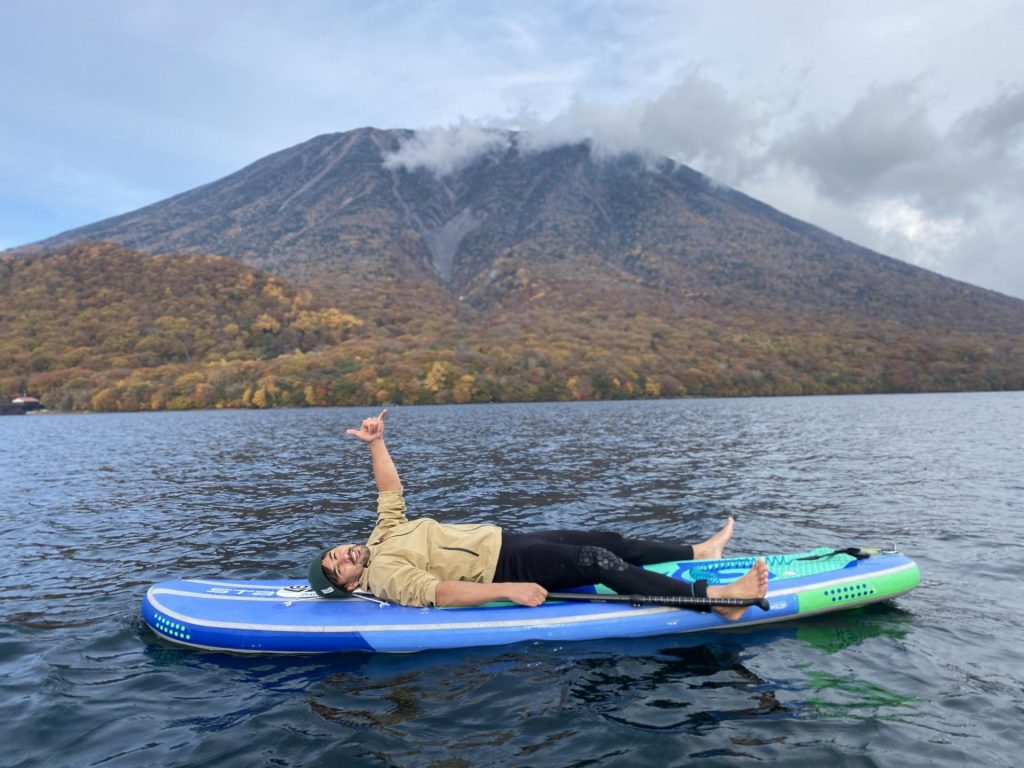Modern Day Samurai: Interview with a Horseback Archer
If you’ve strolled through Kamakura’s famous Tsurugaoka Hachimangu Shrine or Kyoto’s Shimogamo Shrine on a spring weekend, chances are you might have seen the ancient tradition of yabusame. Yabusame is traditional Japanese mounted archery performed at Shinto shrines in dedication to the deities to pray for universal peace or a rich harvest. The archers are usually dressed in richly patterned Kamakura-era hunting clothes. Although this ritual is intended for the god of the shrine, the thrilling atmosphere of the horses running along a single track and their riders focused on the target often draws a crowd.
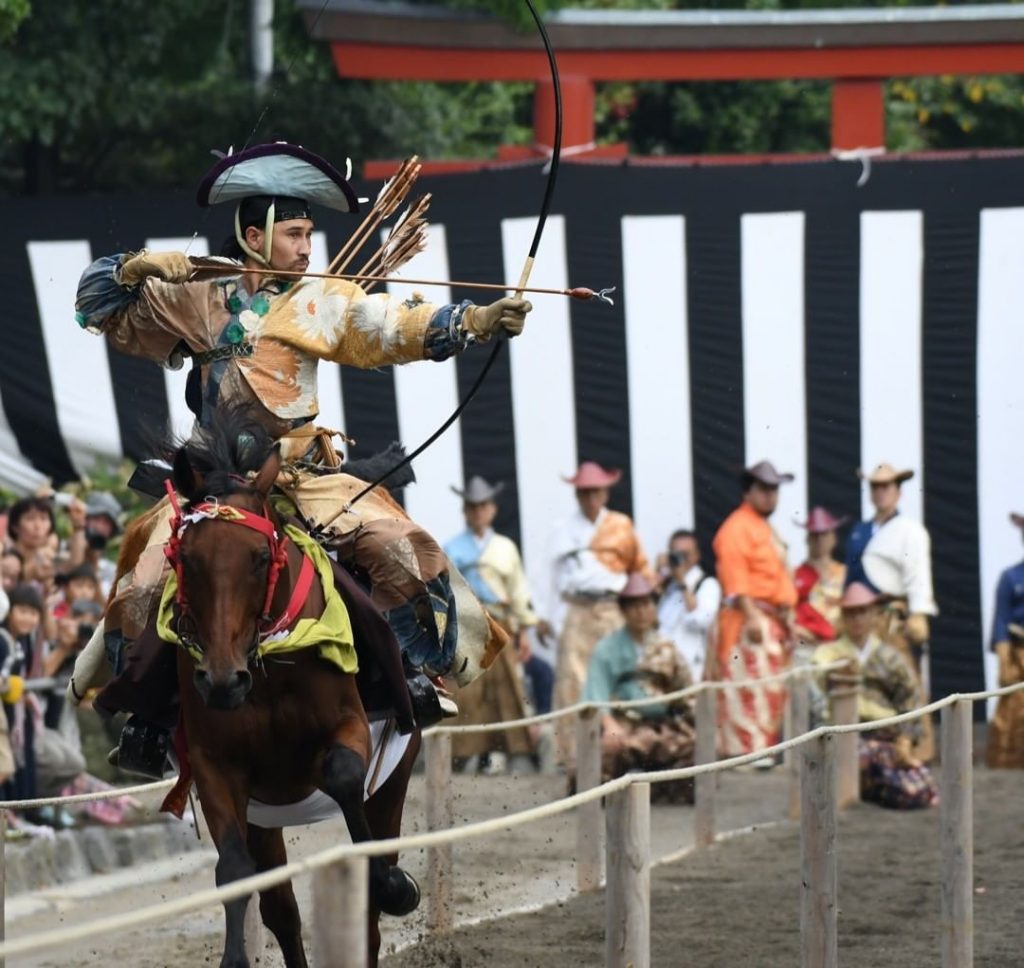
Photo by Takarada Kouhei
The mountainous Nikko in Tochigi is not only the site of Toshogu, the famed Shinto shrine, but also one of the premier places for yabusame training. We talked with Michael No, the first foreign opening rider of a traditional yabusame ritual. Originally from Melbourne, Australia, No has called Nikko his home for the past eight years.
Rie Miyoshi: Was it always your dream to practice yabusame?
Michael No: Horses were always in the background of my life as my maternal grandparents were serious horse people. I never had formal training but I knew the basics of riding and I’d been practicing archery since I was 18 or so.
When I was around 16 years old, I had a vision that one day, I would catch and train a wild horse and ride bareback shooting arrows. I got into motorbikes and other outdoor pursuits, and forgot about that vision—until I came to know about yabusame in Japan. Seeing yabusame in person left such a strong impression on me and I immediately recalled my childhood vision.
RM: How did you end up in Nikko?
MN: I was very fortunate. Back in 2012, I was in Japan on a working holiday in a small town in northern Saitama. I worked at an organic farm and trained judo and kyudo several times a week. My visa was going to expire and I realized I hadn’t explored Japan yet! So I decided to travel around Japan, which was when I decided to pursue yabusame.
While I was traveling through Nikko with my brother, we were hanging out at a restaurant with the owner of Edo Wonderland, a Japanese cultural theme park. We immediately hit it off and I told him about my dream of wanting to try yabusame. It just so happened that one of his staff practiced yabusame. The owner also had several horses of his own for cultural reenactments at Edo Wonderland. I offered to volunteer for him as a stable hand and any other work I could assist with, while I stayed in Nikko and trained for yabusame. It’s been over eight years since I started.
There are currently two remaining traditional yabusame schools in Japan: Ogasawara-ryu and Takeda-ryu. Both are very old; Ogasawara-ryu was formed during the Kamakura period so it’s over 800 years old. I was accepted as a member of the Ogasawara-ryu school after a year of training and living in Nikko.
RM: Is yabusame what you pursue as a hobby or professionally?
MN: Today there are two types of yabusame: sports and yabusame-shinji, which is for traditional rituals. I practice the latter, and at my school, Ogasawara-ryu, it is not allowed for even the teachers to make money from yabusame. Having said that, it’s hard to describe it as a hobby as it has become a very defining part of my life as much as my work.
Professionally, I’m continuing my career at Edo Wonderland as deputy manager of project planning and sales, and also working as a stable manager and horse trainer.
RM: Can you explain more about what happens during yabusame-shinji?
MN: Traditional yabusame is usually held in spring or autumn. Three riders called the ite are chosen to perform the ritual. Each rider aims to hit three targets while galloping. It’s a collective effort and more favorable to have a greater number of hits. After the initial three ite, ten to fifteen other riders perform yabusame but their results are said to not affect the outcome of the prayer.
RM: It must have meant a lot then, when you were chosen as the first rider to welcome in the Reiwa Era at Shimogamo Shrine. How did you get chosen?
MN: The teacher at Ogasawara-ryu always selects the riders based on how we’ve been practicing and performing. I was very grateful to be selected, to ride and know that my nationality didn’t prevent my selection. There’s always some pressure, but that occasion was indeed amplified. It was actually my first time to be first rider too.
RM: Are there rankings of yabusame riders?
MN: In Ogasawara-ryu there are nine ranks, or menkyo as they’re called in Japanese. These ranks are issued at the teacher’s discretion and based not only on riding and archery ability but the student’s overall development in accordance with the school’s teachings.
You’re (maybe) given your next menkyo once every few years at a shrine. I’m currently nurimuchi which is the third rank. It’s very subtle but you can tell to some degree who is in which rank depending on the type of clothing and items they carry while performing yabusame. For example, beginners all wear black hakama pants.
Usually a fellow member of the school lets you know that you’re about to rank up—sometimes just a few hours before you’re given your menkyo.
Receiving a new rank feels like a whole ritual too. The yabusame school is very formal, like we generally don’t chat casually with our sensei, and you have to follow reiho (a set of etiquette rules) like how to bow and open fusuma sliding doors.

Photo by Taizo Mori 
Photo by Joffrey Maubert
RM: What’s a typical day like for someone who practices yabusame?
MN: Most of us typically work regular day jobs, so we practice in the evening or weekends. Typical training consists of kisha taiso, a warm up and strength building exercise. Imagine a sumo starting stance but with the back vertical and straight as if riding a horse. We hold this position while doing a series of arm movements, raising them above your head and stretching out, simulating drawing the bow. We practice this usually 30 to 60 times slowly over five to ten minutes.
This is followed by mokuba keiko, wooden horse training. This is to focus on correct posture and shooting techniques while building strength in the legs. A wooden horse never gets tired, so you can focus on technique and easy correction by the sensei. We do this at least for three sets (24 arrows) each. In total a practice session takes an hour to an hour and a half.

Photo by Edo Wonderland
RM: What about practicing on a horse?
MN: Depending on where the students are located, official horseback training camps are held every month or two. We practice mainly in spring and autumn which is traditionally when the festivals with yabusame rituals are held. Winter and summer are our off seasons as the weather is too extreme for horses.
Thankfully being based out of Nikko, I live a very active lifestyle and ride horses several times a week, in various riding styles.
RM: Do you have your own horse for yabusame?
MN: No, the horses I ride for yabusame belong to separate stables affiliated with the school. These horses are trained for yabusame. We often ride the same horses, though they vary regionally.
We usually do a practice run before the ritual. This is mainly for the horse so they get used to the track. You also get a feel for how fast or slow the horse is going to run during the honban (actual ritual).
Occasionally I have to ride a new horse, but there’s usually a time to meet, ride and get an overall feel for each other which is usually on the day prior to the ritual. That said, I always make an effort to build as close a connection as possible with every horse I come in contact with.
RM: What is it like to work with horses?
MN: The horses at the stable I work at are like my family. They’re trained in various things and I also practice yabusame with them privately, but they are not used at traditional yabusame events.
Horses have given me so much. I have seen a lot of amazing—and not so amazing—horsemanship, so my goal when caring for these horses is to be educated and find the most peaceful way to work with them. I ask myself, ‘How can I influence them be a happy and understanding partner?’ Unlike a little puppy that you can just scoop up and tell them ‘No,’ horses are big and you have to learn how to deal with them intelligently to get willing cooperation from them.
We used to have a beautiful horse with us named Akebono. When he first came, he was traumatized from previous bad experiences. He hated people and was so sensitive. But he pushed me to study how to nurture horses back into a healthy mental state, and he became so trusting and affectionate. I don’t know everything but horses show me there are smarter, gentler ways to work with these amazing creatures.
RM: What do you enjoy about living in Nikko?
MN: Nikko is a beautiful location surrounded by rugged nature, not to mention it’s one of the premier places for yabusame training. In summer you can go stand-up paddling on Lake Chuzenji or enjoy day and multi-day hiking across some incredible landscapes. In winter there’s ice climbing. For those interested in Edo period culture and entertainment, you can drop by Edo Wonderland and even try yabusame wooden horse training.
RM: What do you see for the future of yabusame in Japan?
MN: Even though many traditions struggle in modern society, Ogasawa-ryu has persevered since the Kamakura period. I imagine it’ll be a fine line between evolving with the times to survive and accurately preserving tradition, but I’d like to believe this timeless ritual can survive another 800 years.
Find out more information about Nikko here.
Learn more about Edo Wonderland here.
Modern Day Samurai: Interview with a Horseback Archer





